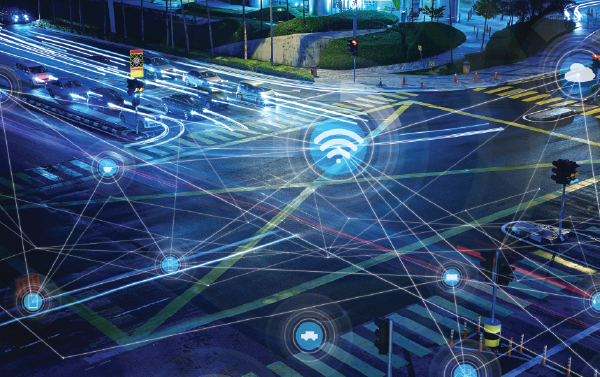
A car without a driver may sound like an accident waiting to happen. But automated cars may be the key to making our roads and highways safer, more efficient and less polluting.
"Automation is going to be a lot less prone to human error," says Dr. John Lodge, Chief Technology Officer for the Communications Research Centre (CRC). "Autonomous cars will have built-in intelligence. They will also have their own optical as well as radar sensors."
This will, however, require a much higher level of wireless connectivity than is currently available. That's why the CRC, Canada's primary advanced telecommunications research facility, is conducting research into the next generation of wireless technology – 5G – using millimetre waves to achieve better connectivity and help make driverless cars a reality.
"Millimetre waves are good because they have lots of bandwidth and there's frequency available that isn't already oversubscribed to other users," says Dr. Lodge. "But they're very short wavelengths. If you picture waves on a lake, they are typically many feet long. If you put a stick in the water, for example, the long waves will flow right around it. These short millimetre waves don't flow around or penetrate objects or buildings as well as the more conventional waves you use for your mobile phone for example."
He says this could result in dead spots or pockets of poor wireless service. To prevent this, the CRC is investigating the use of engineered surfaces to enhance the coverage of millimetre waves and help fill in those "dead spots."
"An engineered surface is like using a specialized mirror to reflect the radio energy to the spot that isn't covered," Dr. Lodge says. "Engineered surfaces are printed electronics. This means you can print conductors, semi-conductors, etc. directly onto flexible materials using standard printing processes."
These can then be embedded into common building materials to extend wireless coverage.
"A cost-effective way to make coverage a lot better may be to put up some of these engineered surfaces on the sides of buildings or on street signs, to provide a diversity of paths to fill in some of these dead areas," Dr. Lodge explains.
This is promising technology that could be applied to improve 5G coverage and help autonomous cars navigate, or identify street signs or traffic information. Busy intersections would be an obvious place to use engineered surfaces.
"That's where a lot of the action is. It's where the majority of accidents happen," he says. "In terms of flow control, intersections are also where you have the most congestion. Intersections are where the vehicle has to decide whether to turn right, left, or go straight ahead. For a whole lot of reasons the first payback in making sure you have really good connectivity is going to be at busy intersections – for both safety and efficiency."
Contact us to learn more about our research on engineered surfaces, millimetre waves and other Grand Challenges research projects and collaboration opportunities.
